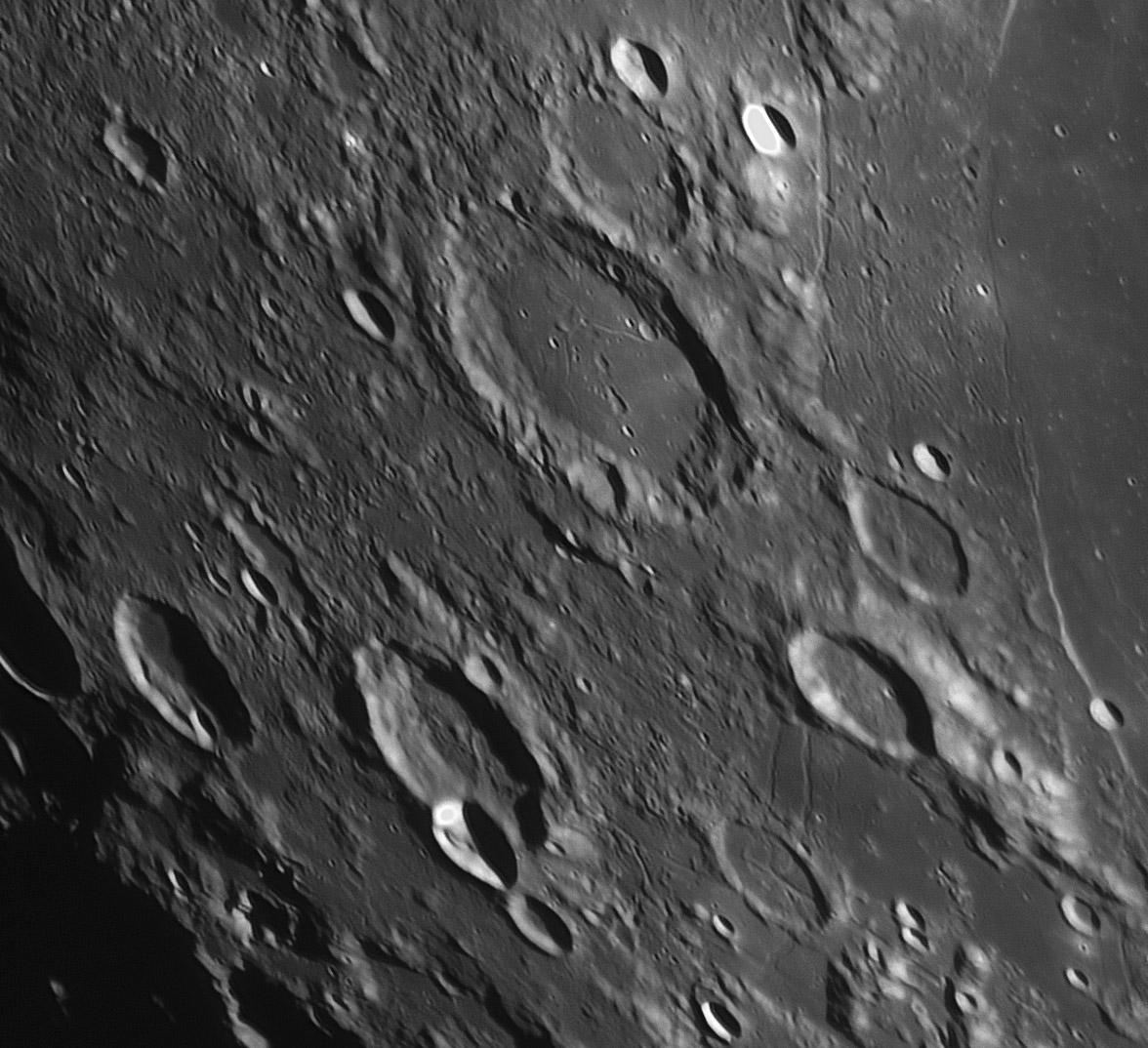January 21, 2014
This Time Topo Confirms What We Believe

image by Richard Bosman, Enschede, Netherland
Mersenius has long been observed to have shading and even shadows indicative of an up domed floor. Is it? Following the surprising revelation that LRO-derived revealed a major unexpected topographic variation on the floor of Pitatus, it was with some excitement that I made topographic traverses across the floor of Mersenius. North to south and east to west traverses confirm what observers suspected. The entire floor is 600-700 m higher in the center than around the edges. I doubt if the high floor was constructed of lava flows, erupted one on top of the other. The families of rilles - from the center towards the rim and concentric on the western side - are consistent with the floor being uplifted, probably by the injection of magma under the crater after the original flat floor had formed. This is in fact the mechanism Pete Schultz proposed in 1976 to explain Mersenius and other form floor-fractured craters. The new topo data reinforce the likely correctness of that interpretation.
Chuck Wood
Technical Data
C14
Related Links
21st Century Atlas chart .26
Richard's Astro Fotografie website
Yesterday's LPOD: A Giant Hidden Hole?
Tomorrow's LPOD: What is the Descartes Formation?
COMMENTS?
Register, Log in, and join in the comments.



